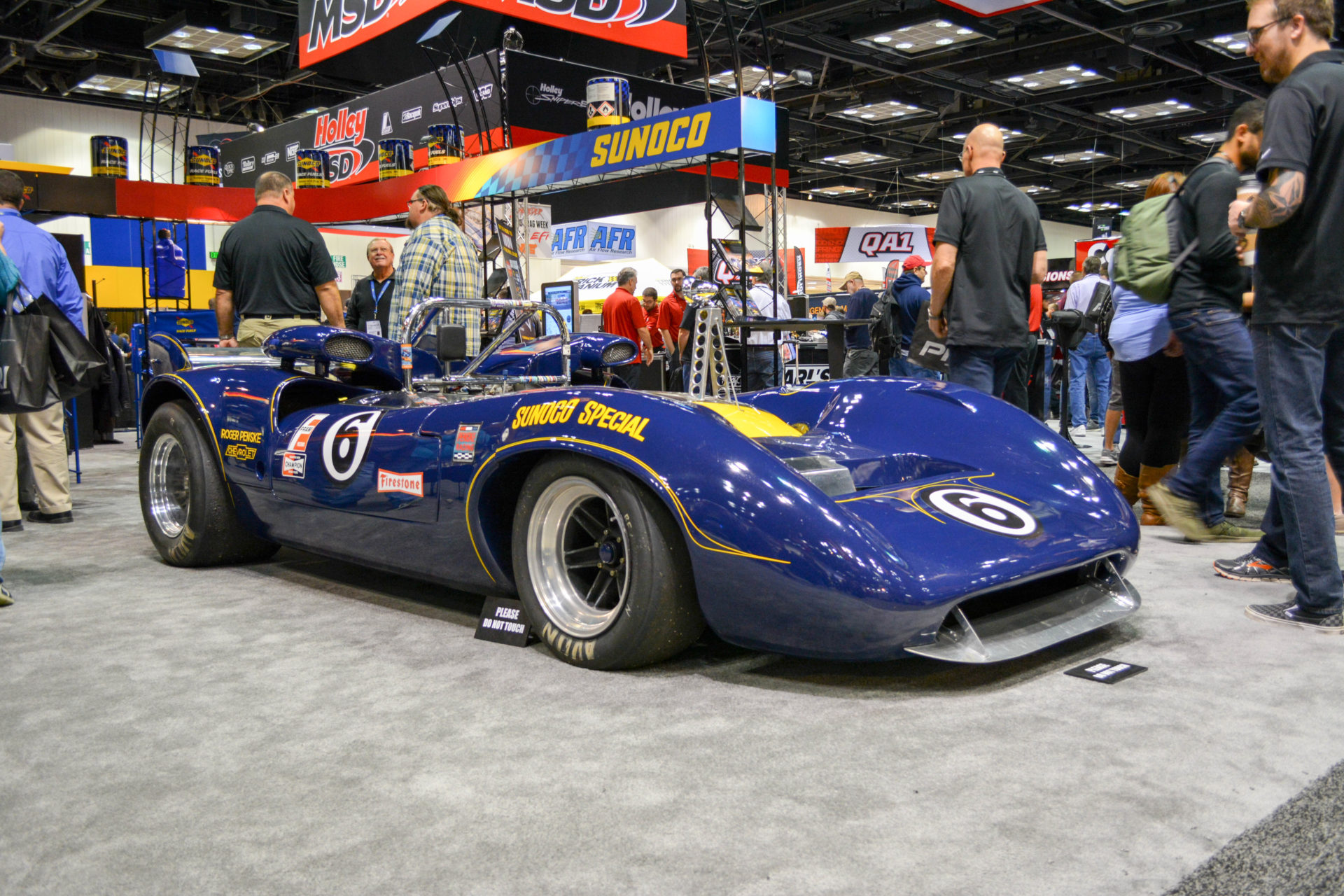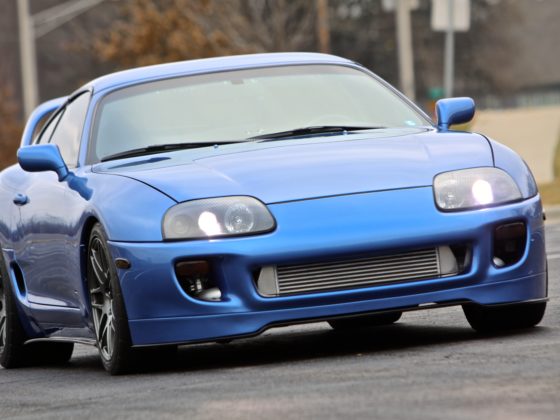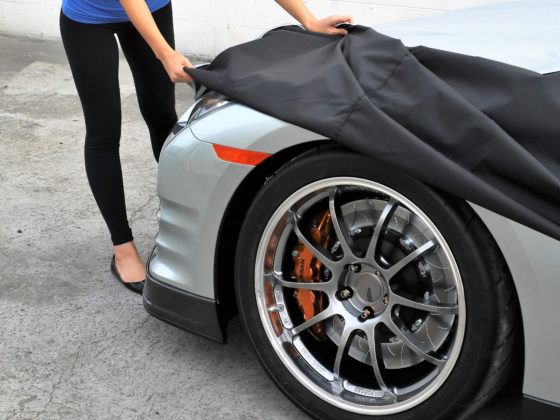,

Also on display was the radical Can-Jam Black Storm STI that won Motovicity’s Speed Ring competition earlier in 2017. Perhaps Frank can give us a bit more info on the car as it seems there isn’t a lot of info available out there. What we do know, is that in 2018, Black Storm will be even faster than it was in 2017. Can-Jam plans to take on any and all comers in North American Time Attack. We can’t wait to see what the competition can bring!

Another long distance dragster, this Viper was built for standing mile events, running a loose interpretation of the General Lee theme. Two turbos tucked under the firewall provide around 2,000 hp of power, with a gearbox beefed up by Pfitzner Performance Gearboxes Tremec TR-6060 sequential gearbox conversion. That’s right, you too can have a sequential gearbox in your Viper, Camaro, or Mustang.

Honda was showing off a number of neat cars, including this Civic GT racer. Throwing out almost everything Civic-y about it, the Civic GT is more like a NASCAR stock car than a GT car. With a full carbon fiber body and tube frame, this Civic is still powered by a K24, but turned the wrong way so it can mate to an S2000 transmission. When Honda makes it look this easy, it kind of makes you wonder why all Civics don’t have their engines like this. It is currently only in the “concept” stages, but Honda could certainly produce more of these silhouette type GT racers.

Along with the GT concept, Honda debuted their own Formula 4 program. Formula 4 is the most entry level Formula series in the FIA ladder (i.e. the very first step in the road to F1) and uses spec chassis with homologated engines. Honda is joining F4 in the USA with by slotting a modified Civic Type-R engine into the back of their F4 cars (which are replete with Halos as well, per FIA’s mandate). Similar to the old Formula Atlantics (which used 4-AGE engines) or USF-2000 (which use Mazda MZR engines), Honda’s F4 uses an off-the-shelf CTR engine, tweaked for a bit more power, and modified to be a semi-stressed member.

As you can see, the factory Civic motor (on the right) is nearly identical to the F4 engine. In fact the biggest external changes are removing the plastic vanity cover and replacing the oil pan with a low profile, dry sump pan, both preventing oil starvation under high-G loads, and bracing the crankshaft to prevent chassis flex from spinning bearings. Internally, the two engines are very similar, making nearly the same horsepower.



